Share this page:
The Atlanta BeltLine
You've most likely heard of the Atlanta BeltLine. Are you wondering how to tackle this famous – but often very crowded – attraction? It isn’t always easy – but it’s worth it!
I love - LOVE - the Atlanta BeltLine. It's one of the first things I tell people to do in Atlanta. But it's not a one-size-fits-all activity and there is a lot to know and learn about it.
On this page you'll find:
History and Origins of the Atlanta BeltLine
Planning a visit to the Atlanta BeltLine
Map of the Atlanta BeltLine
Great places to eat and drink
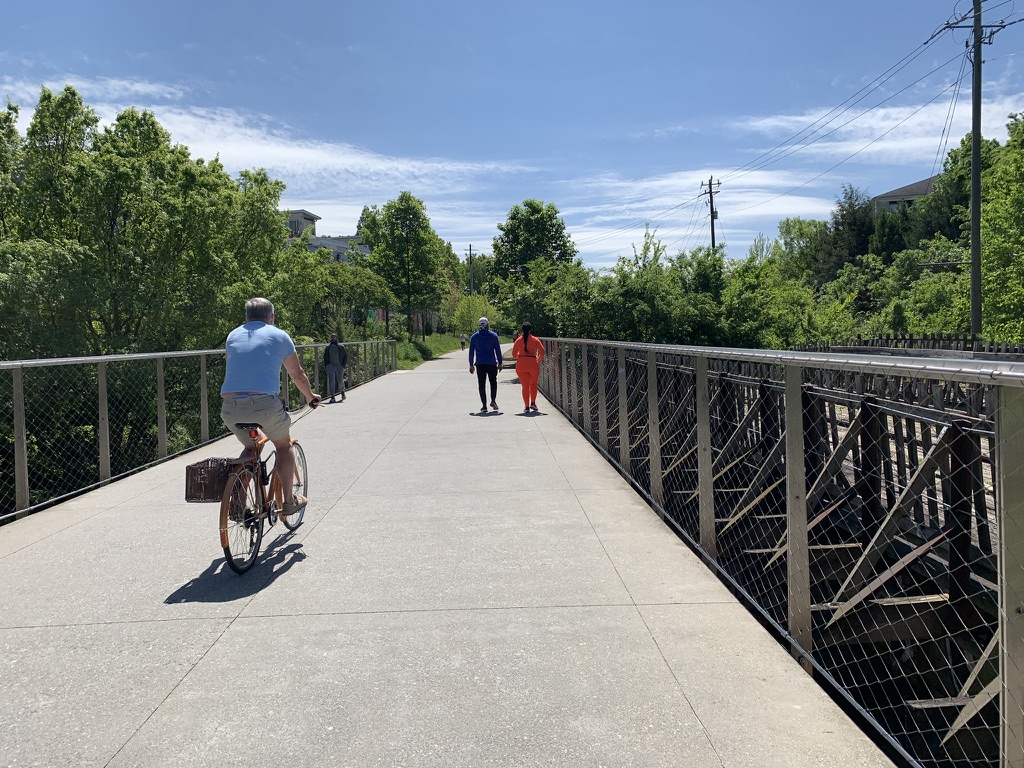 One of the many views of the Eastside BeltLine Trail
One of the many views of the Eastside BeltLine TrailThe Atlanta BeltLine is the most dramatic, transformative thing that has happened to the city since Gen. Sherman visited.
All kidding aside, the BeltLine is the most significant transportation, urban and economic development project this – or any – city has undertaken in a century. It is a project that is not even complete, and it has already had a tremendous impact on the entire city. When it’s finally finished, it will have single-handedly changed the entire tenor and face of Atlanta (in good and bad ways).
If fact, there's a segment of it right by my house. It's the Northside Trail and is one of the least crowded and most residential paths of the Atlanta BeltLine. It doesn't yet connect to the other areas, but it will.
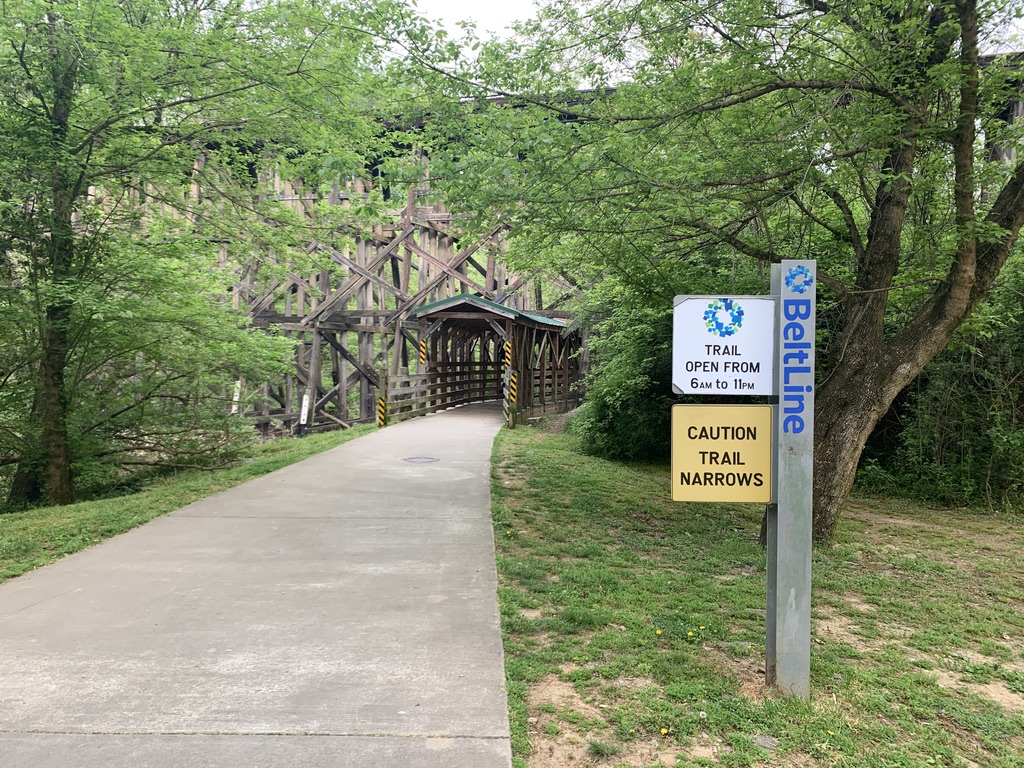 The BeltLine Northside Trail is very serene
The BeltLine Northside Trail is very sereneBeltLine Origins
The BeltLine began as a thesis by a graduate student at Georgia Tech. Frustrated by the lack of transit in Atlanta, he looked at old plans of the city and saw an actual beltline of train tracks that circled the city. Indeed, these were built after the Civil War as Atlanta quickly emerged as the business, manufacturing, and transportation hub of the South.
The corridor of tracks was used to ferry goods and services to main tracks that went all over the country. Eventually, both manufacturing and train use dwindled and many of the tracks went dormant (some are still used for freight).
Why not take a walking food tour of the BeltLine to get a great feel of the area.
His plan was to restore the BeltLine to a transit circle that would go around the city – joining disparate and disjointed neighborhoods and alleviating Atlanta’s famously hellacious traffic.
Once he developed this thesis, he mailed it to dozens of influential Atlantans, several of whom immediately saw the power of this proposal. And voila, a few years later the Atlanta BeltLine was taking shape.
The BeltLine Loop
The BeltLine impacts the entire city of Atlanta. When it’s complete, it will connect 45 intown neighborhoods via a 22-mile transit loop and will feature an additional 33 miles of walking tails with more than 1,300 acres of greenspace.
The AtlantaBeltLine has been a work in progress for more than a decade, but it is very quickly taking shape – and reshaping Atlanta even more quickly. Currently, the two most developed trails are the Eastside and West End Trails, but that will change rapidly.
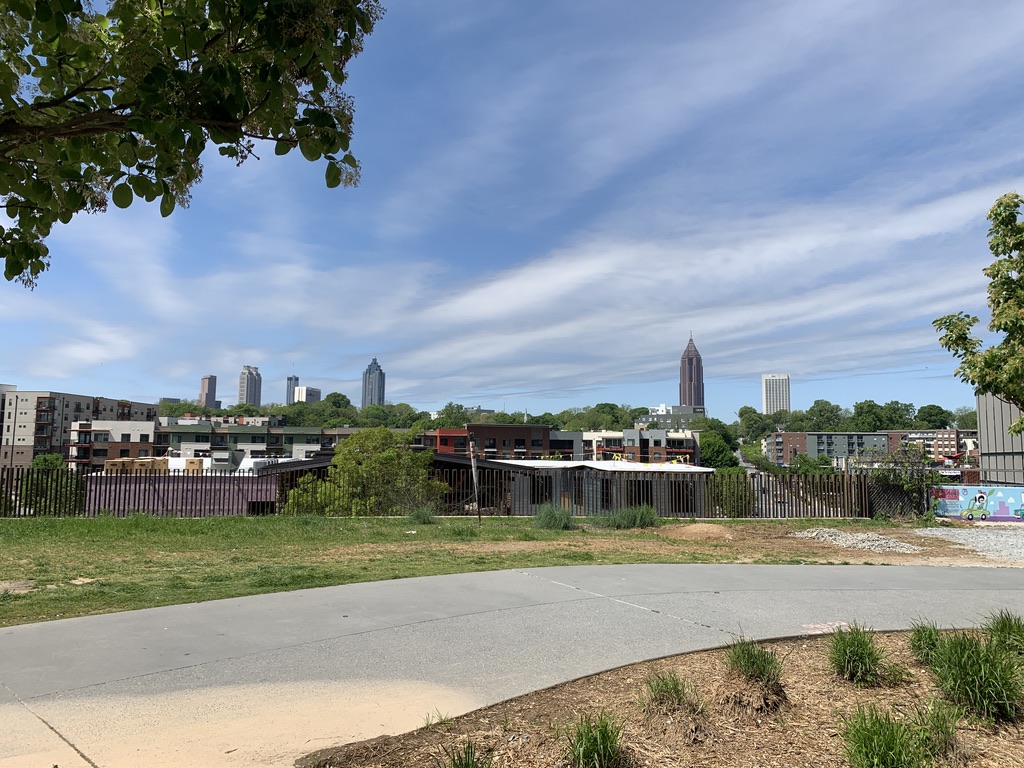 The Atlanta BeltLine is transforming the entire city
The Atlanta BeltLine is transforming the entire cityBeltLine Eastside Trail
The first segment of the BeltLine that opened was the Eastside Trail. It’s hard to explain how much that changed that area of the city, but I’ll try.
The Home Depot that was on the trail was nicknamed “Homeless Depot” and the Kroger was known as “Murder Kroger.” I wish this were a joke. With a few exceptions, the neighborhoods adjacent to this first trail were beyond sketchy. Now, just a few years in, condos in this area are springing up overnight – and selling for eye-popping numbers.
The crown jewel of the Eastside trail is Ponce City Market - originally built in 1926 as a Sears, Roebuck & Co. distribution center to take advantage of the BetlLine trains. It is a shopping, eating and drinking playground and is a great starting point for the Eastside stroll.
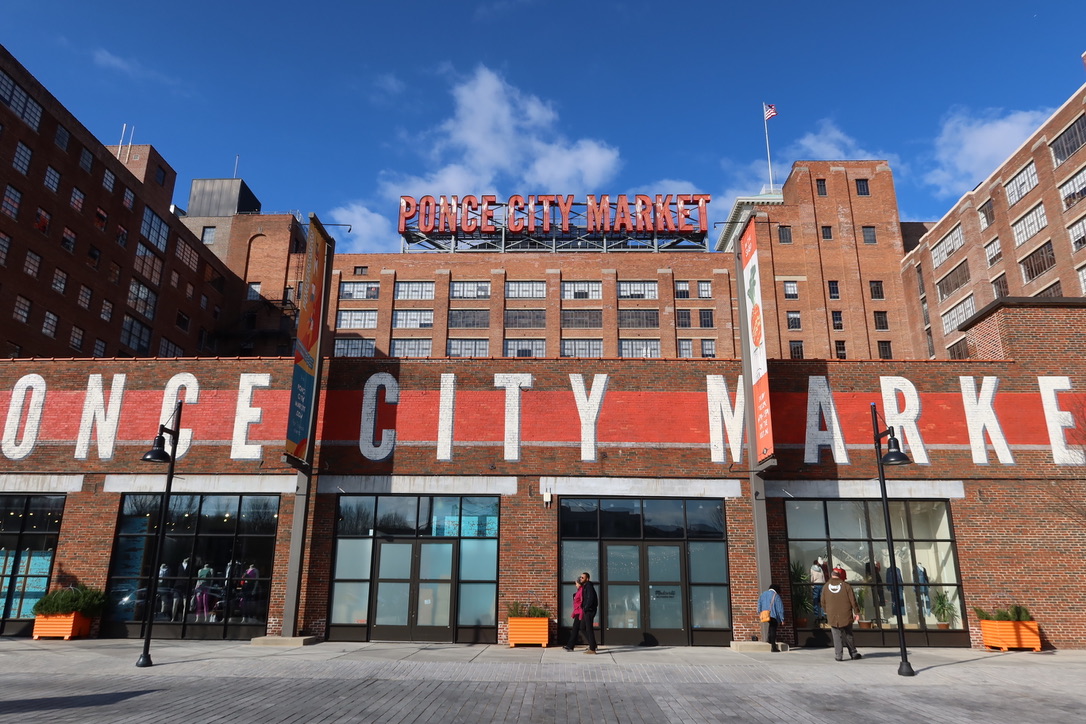 Ponce City Market transformed the BeltLine almost overnight
Ponce City Market transformed the BeltLine almost overnightAll the neighborhoods around the Eastside BeltLine have seen massive growth and price increases (which is a major bone of contention for long-time residents).
More than 2 million people walk the Eastside Trail every year, which stretches from Piedmont Park to Krog Street Market to Ponce City Market, going through Old Fourth Ward, Inman Park and other hip ‘hoods.
The Eastside Trail features some of the most lively parts of the Atlanta BeltLine and you can do a LONG bar stroll, eat, shop and enjoy all the urban street art along the way.
 My sister Elyssa and I tried many of the Atlanta BeltLine bars for research. This is from Estrella, a lovely rooftop venue.
My sister Elyssa and I tried many of the Atlanta BeltLine bars for research. This is from Estrella, a lovely rooftop venue.BeltLine West End Trail
The West End Trail recently opened and quickly has become the “hipster” area, teeming with breweries and distilleries, so many that it’s gained a nickname of “Malt Disney.”
This segment also very rapidly gentrifying neighboring areas. This area is connected to the Eastside by the Southside Trail, which also recently opened – although it’s in very early stages.
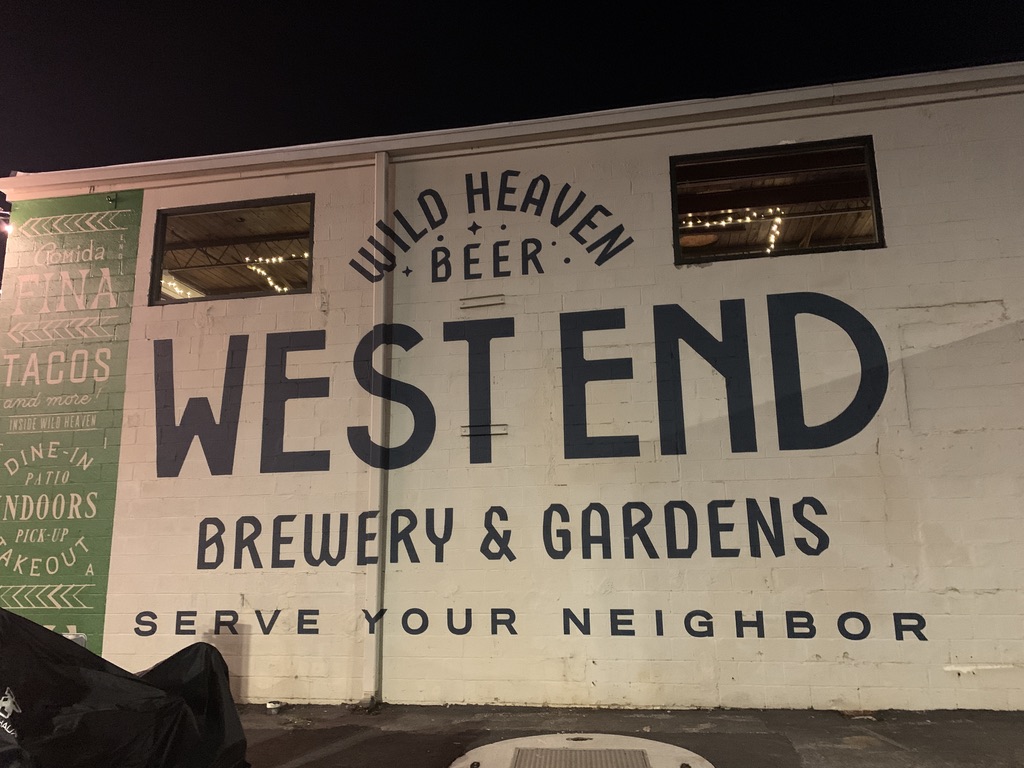 One of the many breweries on the West End of the BeltLine
One of the many breweries on the West End of the BeltLineThis area is actually my favorite part of the BeltLine. For one thing, it is not nearly as crowded and touristy. Another thing that is important about this area, and also the connecting Southside trail, is that the BeltLine organization really worked with impacted neighborhoods to make sure that the BeltLine worked for those neighborhoods and fulfilled its promise to make Atlanta a global beacon for an equitable, inclusive and sustainable city.
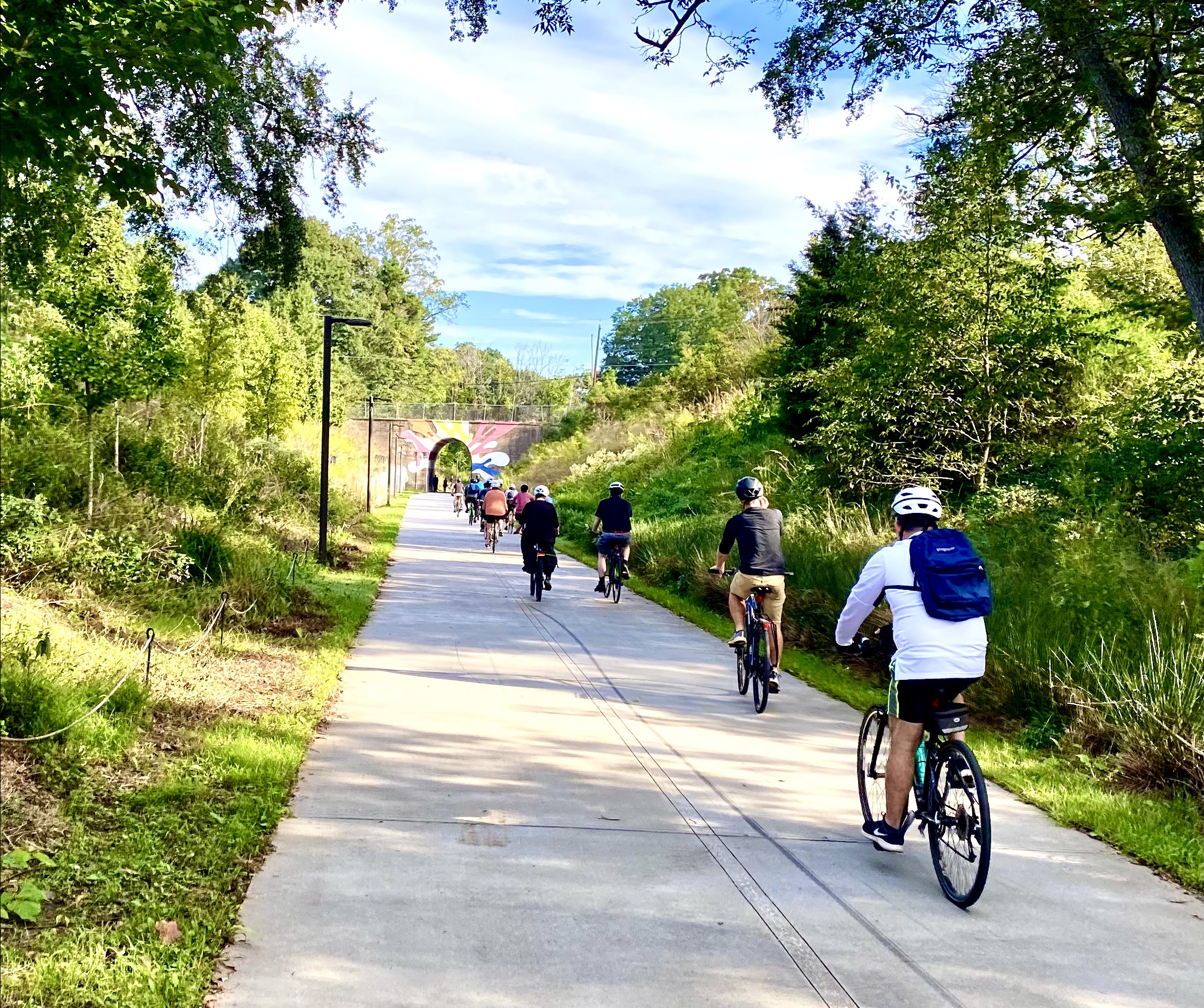 Biking the West End Trail of the Beltline.
Biking the West End Trail of the Beltline.The whole BeltLine will take a few more years – about a decade – to be finished. It’s a bit complicated because several freight companies still use the tracks and it requires a lot of negotiation to get the right-of-way usage permission. But it is happening and when it is complete, Atlanta will never be the same. And I for one can’t wait to see that.
Doing the Atlanta beltline
You really can't "do" the Atlanta BeltLine in a day. You might not even get to all of it. But here are my favorite recommendations:
Favorite Places to Eat on the BeltLine
Favorite Places to Drink on the BeltLine
Favorite things to do on the BeltLine
Favorite walking and biking paths on the BeltLine
New! Comments
I'd love to hear what you think! Please leave a comment below.